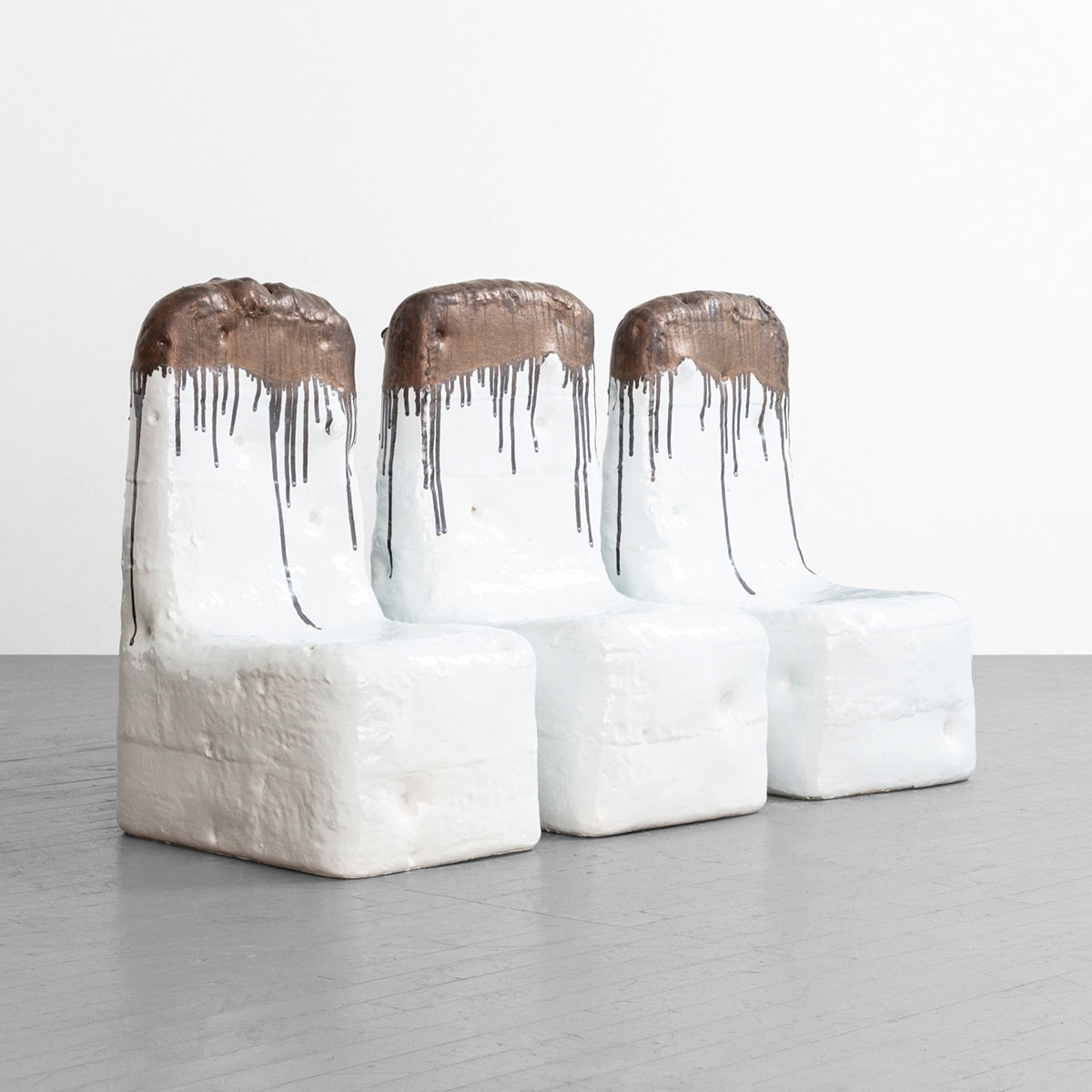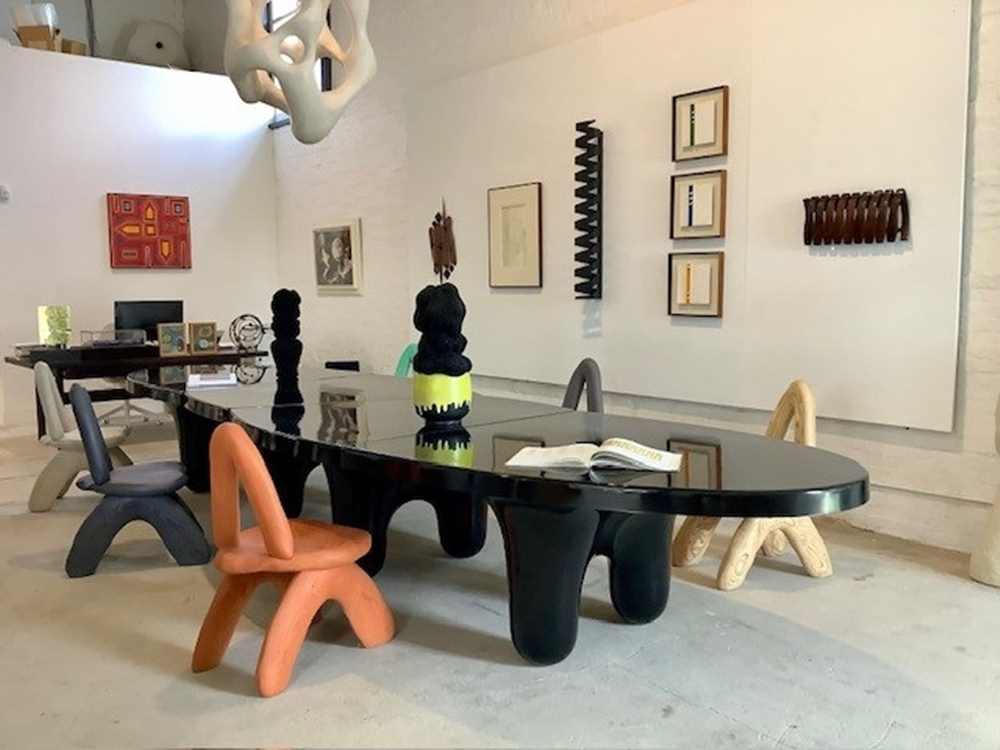
Hun-Chung Lee (b. 1967) is widely recognized for his mastery of 15th century Korean celadon glazing techniques, which he uses to create stunning ceramic works that embrace and blend the formal vocabularies of sculpture and functional design. Born and raised in Seoul, Lee earned his BFA and MFA in ceramic sculpture from Hongik University in Seoul, before moving to the United States to obtain a second MFA in sculpture from the San Francisco Art Institute. He then pursued a PhD in architecture in Korea. The range of Lee’s education speaks to his diverging aesthetic and conceptual interests and his vision to merge the seemingly distinct disciplines of art, design, and architecture into a singular whole. Over the course of his career, he has created a vast array of functional design works, large-scale, multi-part installations and smaller ceramic objects.
Lee’s approach requires significant engagement with and knowledge of his materials and process. He hand-sculpts each of his pieces and paints the layers of glaze over several days, exerting the expertise he has honed over 30 years, while embracing the mystery and surprise of the process.
Hun-Chung Lee’s work is found in the permanent collections of the Archie Bray Foundation Center, Helena, MT, Dae-voo Culture Foundation, Seoul, South Korea, National Museum of Contemporary Art, Seoul, South Korea, Jinro Foundation of Culture, Seoul, South Korea, Niagara Gallery, Melbourne, Australia, and more. He currently lives and works between Seoul and Los Angeles.

Hun-Chung Lee, Unique Glazed Ceramic Three Piece Sofa, 2021, United States. Glazed ceramic, 41 x 21 x 28 in. (individual chairs), 41 x 60 x 28 in. (three piece sofa). Designed and made by Hun-Chung Lee. Price available upon request.

Hun-Chung Lee, Unique Glazed Ceramic Large Bench, 2022, United States. Glazed ceramic, 101 x 36 x 28 in. Designed and made by Hun-Chung Lee. Price available upon request.

Hun-Chung Lee, Unique Glazed Ceramic Low Coffee Table, 2021, South Korea. Glazed ceramic, 14 x 52 x 33 in. Designed and made by Hun-Chung Lee. Price available upon request.


